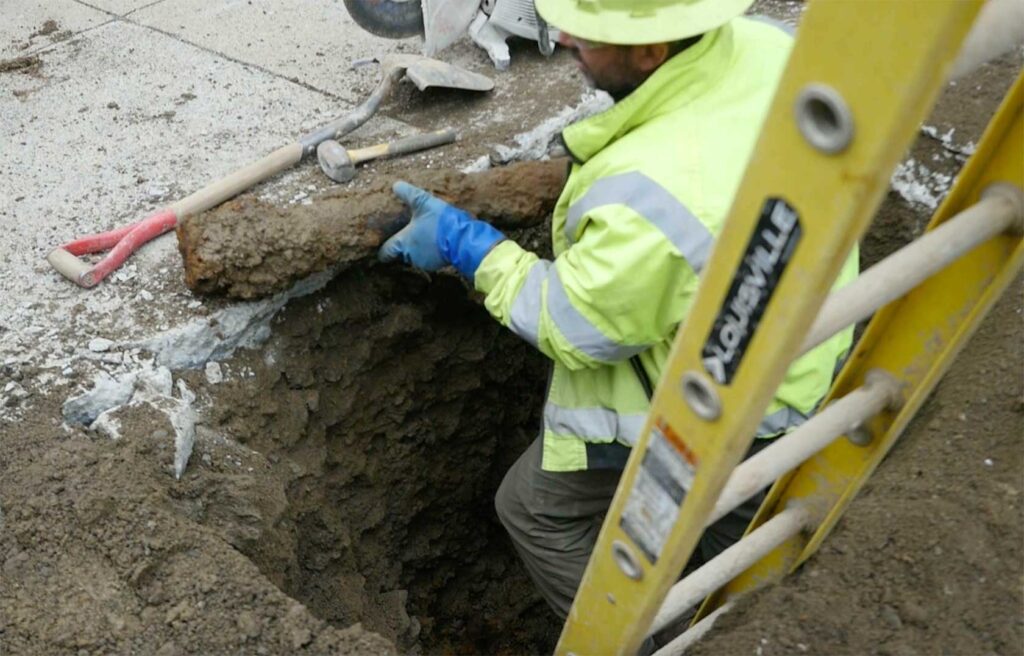Health hazards in your home: The hidden dangers of lead pipes
Lead pipes are an often-overlooked issue plaguing Boston. But there is a solution.

For many parents, neighborhood safety and school zoning are at the forefront of their minds when choosing a place to live. Still, an issue that could affect their family’s health and well-being remains unknown: A surprising number of homes in Boston still receive their drinking water through lead pipes.
While the dangers of lead exposure have the potential to affect all Bostonians, the prevalence of lead pipes is highest in predominantly low-income and minority neighborhoods.
Mazi, a Dorchester resident enrolled at Roxbury Community College is taking precautions regarding the potential for lead pipes in her future home.
“I’m not trying to move into anywhere like that, I know it is not always told to people moving into the neighborhood that there is lead, so I’m just being really cautious and taking the extra steps to know what kind of place I am moving into.”
Mazi’s family has a history with lead exposure, so she understands the importance of navigating the housing market with lead pipes in mind.
Lead exposure can lead to brain and nervous system damage along with slowed growth and development in children. This can be a cause of low IQ and underperformance in school, according to the CDC.
“I have a cousin who did end up getting lead poisoning, and I do know that it affected his mental state and well-being, making it harder for him to learn and progress through school.”
Janelle Bruno, a mother, and Charlestown resident was unaware that the water in her taps came through lead pipes until her 16-month-old daughter, Cecilia, tested at a lead level of double what the Center for Disease Control says is a cause for concern at a routine doctor’s appointment.
“I bought a test kit… and it immediately showed there was lead levels in the water,” said Bruno.
After this discovery, Bruno went online to share her family’s story. She connected with another concerned parent, Emily Hodge, whose daughter had also tested positive for a high level of lead in her system.

The number of lead pipes is highest in predominantly low-income and minority neighborhoods. PHOTO: COURTESY OF MUCK ROCK
“She shined a light on an issue that people needed to hear about,” said Hodge of Bruno. “And if it’s causing issues for kids then it’s obviously a high priority.”
Boston’s water is clean at its sources from the Quabbin Reservoir and the Wachusett Reservoir, but continued use of outdated service lines that run from the main water pipes into homes can lead to lead leaching into drinking water.
To combat this, the Boston Sewer and Water Commission is implementing and revising programs to educate citizens about the dangers of lead pipes, as well as initiatives to tackle the issue at once, by removing the service pipes for free and replacing them with safe copper ones.
“The Boston Water and Sewer Commission is trying to have property owners replace those service lines,” said Thomas Plant, the director of special projects for Boston Public Health Commission’s Division of Environmental and Occupational Health. “They are going to have the funds from the government to have free replacement if they get in touch with them.”Getting property owners onboard remains a struggle, however.
“One of the reasons that it hasn’t happened in complete removal is that the [line] from the water main in the middle of the street to the residents through their foundation is private property and having access to that they have the right to say no,” said Plant. “We want to educate the property owners that there is no need to have a full lead service line connected to their house delivering water that may be contaminated with lead… It’s not needed today. We have the technology and certainly the replacement property services.”
“It’s not mandatory for people to do the pipe replacement, but it’s advisable,” said Tom Bagley, a communications department worker at the BWSC. “You don’t want lead in your pipes with water running through them.”
Understanding that some people may not opt in for the free pipe replacement, Bagley offers a precautionary measure.
“We suggest that people who do have a lead pipe flush their water for about 60 seconds in the morning to just get it flowing again. Any sediment that may have settled overnight will just flush through.”
Kelsey Pieper, an assistant professor in the Department of Civil and Environmental Engineering at Northeastern, works with her students to explore how pipes can interfere with water quality. She recognizes a way homeowners can test to see if there may be lead in their pipes.
“One method is a citizen community science-based approach, where you go into your home and you find where the pipe comes into your wall and you could look at the color of the pipe to see if its copper, plastic, or galvanized iron lead,” said Pieper. “And then you can scratch it and use a magnet and start identifying what’s coming into your home.”
“Unfortunately, you just have to do the work,” said Bruno. “You have to look, check the map, see if there’s lead, if you have copper pipes or not. If it doesn’t say, I would call.” Bruno was surprised to learn how prevalent pipes are. “I thought lead was outdated. I thought it was only on your windowsills and if you had an older home. So [you have to be] aware of what’s there and what’s going on.”
This is Part 1 of “Dark past, green future,” a series of articles on climate justice in collaboration with the Northeastern University School of Journalism, led by Prof. Dan Zedek.






